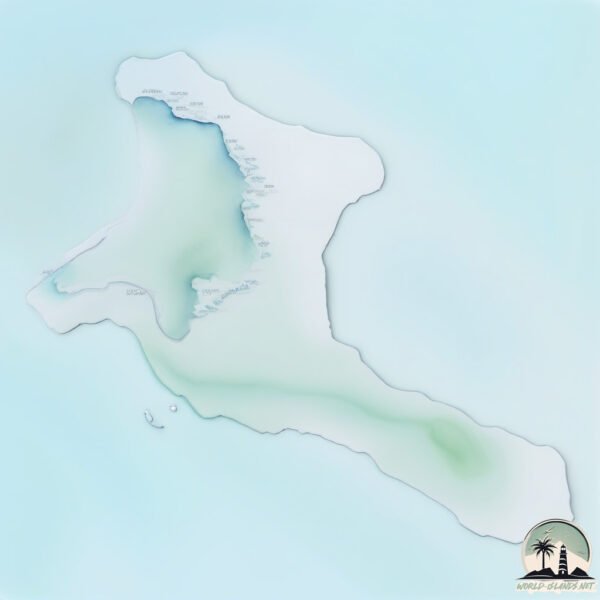Kiribati

Welcome to Kiribati, a Tropical island in the North Pacific Ocean, part of the majestic Pacific Ocean. This guide offers a comprehensive overview of what makes Kiribati unique – from its geography and climate to its population, infrastructure, and beyond. Dive into the details:
- Geography and Size: Explore the island’s size and location.
- Climate and Weather: Weather patterns and temperature.
- Topography and Nature: Uncover the natural wonders of the island.
- Infrastructure and Travelling: Insights on reaching, staying, and making the most of your visit.
- News and Headlines: Latest News.
Geography and size of Kiribati
Size: 475.8 km²
Coastline: 298.6 km
Ocean: Pacific Ocean
Sea: North Pacific Ocean
Continent: Oceania
Kiribati is a Large Island spanning 476 km² with a coastline of 299 km.
Archipel: Kiribati – An island nation in the central Pacific Ocean, comprising 33 atolls and reef islands, known for their vibrant culture and significant challenges due to climate change.
Tectonic Plate: Pacific – The world’s largest tectonic plate, covering much of the Pacific Ocean, known for the Pacific Ring of Fire with extensive seismic and volcanic activity.
The geographic heart of the island is pinpointed at these coordinates:
Latitude: 1.84991691 / Longitude: -157.35499663
Climate and weather of Kiribati
Climate Zone: Tropical
Climate Details: Tropical Savanna, Wet
Temperature: Hot
Climate Characteristics: Defined by distinct wet and dry seasons with high temperatures year-round. Pronounced rainfall occurs during the wet season, while the dry season is marked by drought.
Topography and nature of Kiribati
Timezone: UTC+14:00
Timezone places: Pacific/Kiritimati
Max. Elevation: 8 m
Mean Elevation: -3 m
Vegetation: Herbaceous Cover
Tree Coverage: 27%
The mean elevation is -3 m. The highest elevation on the island reaches approximately 8 meters above sea level. The island is characterized by Plains: Flat, low-lying lands characterized by a maximum elevation of up to 200 meters. On islands, plains are typically coastal lowlands or central flat areas.
Dominating Vegetation: Herbaceous Cover
Comprising mainly of grasses, herbs, and ferns, these areas are common in prairies, meadows, and savannas, and can vary widely in species composition. Kiribati has a tree cover of 27 %.
Vegetation: 11 vegetation zones – Exceptionally Diverse Island
Islands with more than ten vegetation zones are among the most ecologically rich and varied in the world. These islands are akin to miniature continents, boasting an incredible array of ecosystems. The sheer range of habitats, from high peaks to deep valleys, rainforests to deserts, creates a mosaic of life that is unparalleled. They are crucial for conservation and ecological studies.
Infrastructure and Travelling to Kiribati
Does the island have a public airport? yes.
Kiribati has a public and scheduled airport. The following airports are located on this island: Cassidy International Airport.
Does the island have a major port? no.
There are no major ports on Kiribati. The closest major port is ENGLISH HARBOR, approximately 289 km away.
The mean population of Kiribati is 18 per km². Kiribati is Gently Populated. The island belongs to Kiribati.
Continuing your journey, Te Nupa is the next notable island, situated merely km away.
Kiribati is classified as Least developed region: Countries that exhibit the lowest indicators of socioeconomic development, with the lowest Human Development Index ratings. The level of income is Lower middle income.
News – Latest Updates and Headlines from Kiribati
Stay informed with the most recent news and important headlines from Kiribati. Here’s a roundup of the latest developments.
Please note: The data used here has been primarily extracted from satellite readings. Deviations from exact values may occur, particularly regarding the height of elevations and population density. Land area and coastline measurements refer to average values at mean high tide.
